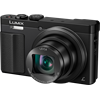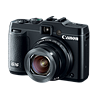Main
Model
Price
Advantages
launch
Announced
Body type
Camera subcategory
Sensor
Effective pixels
Max resolution
Sensor size
Sensor type
Processor
Image ratio w:h
Sensor photo detectors
Other resolutions
Image
ISO
White balance presets
Custom white balance
Image stabilization
Image stabilization notes
Uncompressed format
JPEG quality levels
Photography features
Minimum shutter speed
Maximum shutter speed
Aperture priority
Shutter priority
Manual exposure mode
Subject / scene modes
Built-in flash
Flash range
External flash
Flash modes
Continuous drive
Self-timer
Metering modes
Exposure compensation
AE Bracketing
WB Bracketing
Screen / viewfinder
Articulated LCD
Screen size
Screen dots
Touch screen
Screen type
Live view
Viewfinder type
Viewfinder coverage
Viewfinder magnification
Viewfinder resolution
Videography features
Resolutions
File Format
Microphone
Speaker
Videography notes
Optics & Focus
Focal length (equiv.)
Optical zoom
Maximum aperture
Autofocus
Digital zoom
Manual focus
Normal focus range
Macro focus range
Number of focus points
Physical
Weight (inc. batteries)
Dimensions
Environmentally sealed
Battery
Battery details
Battery Life (CIPA)
Storage
Storage types
Storage included
Connectivity
USB
HDMI
Microphone port
Headphone port
Wireless
Wireless notes
Remote control
Other features
Orientation sensor
GPS
Timelapse recording
GPS notes
Samples
Videos
Summary
The Canon PowerShot G16 is produced with bigger sensor than the Lumix DMC-ZS50 (Lumix DMC-TZ70): 1/1.7' (7.44 x 5.58 mm) versus 1/2.3' (6.17 x 4.55 mm). It is very significant specification of this model as large sensor allows the photographer to shoot photos of the more professional quality. The Canon PowerShot G16 offers a wider ISO range of 80-12800 in compare with 80-6400 ISO range of the Lumix DMC-ZS50 (Lumix DMC-TZ70). This ISO range let the photographer to shoot good quality photos in more difficult situations. The Canon PowerShot G16 has more number of white balance presets - 7. This specification gives the photographer more control over colour. The Panasonic Lumix DMC-ZS50 (Lumix DMC-TZ70) provides better 30x optical zoom. The Lumix DMC-ZS50 (Lumix DMC-TZ70) provides more number of focus points in compare with the Canon PowerShot G16: 23 vs 9. More focus points means more convenience while attempting to focus on subjects which are not centred.
The Lumix DMC-ZS50 (Lumix DMC-TZ70) display is better as it has more number of screen dots 1,040,000 in compare to 922,000 dots of the Canon PowerShot G16 screen. The higher dot count display is better for reviewing photos on your camera. The Canon PowerShot G16 provides better minimum (15 seconds) and fastest (1/4000 second) shutter speeds.
The Canon PowerShot G16 supports external flash. It provides perfect control over the exposure and lighting of the object in low light and in bright light situations when the camera owner needs to fill-flash. The Canon PowerShot G16 battery life is better than the Lumix DMC-ZS50 (Lumix DMC-TZ70) battery life. According to CIPA standards the photographer will be able to produce 360 shots with the PowerShot G16 and only 300 with the Lumix DMC-ZS50 (Lumix DMC-TZ70). The Panasonic Lumix DMC-ZS50 (Lumix DMC-TZ70) weighs 243g which is 113g less than the weight of the Canon PowerShot G16. The Canon PowerShot G16 can utilize optional accessory GPS devices. This feature can be convenient if the camera owner is a traveller, to be able to go into the picture metadata and see exactly where a picture was produced.
The Canon PowerShot G16 has 11 advantages and the Lumix DMC-ZS50 (Lumix DMC-TZ70) only 4 so the PowerShot G16 becomes the best choice. Get the lowest price on Amazon.


